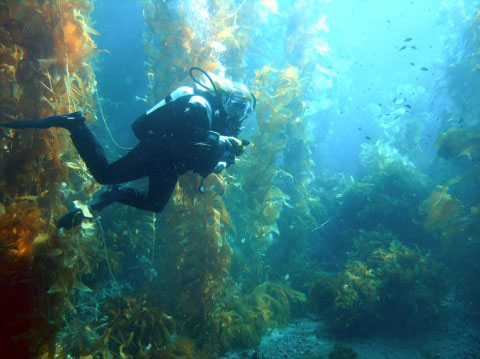1. How Currents Affect Us (1/4)
For people who make their living in shipping, various marine industries, fisheries and aquaculture ocean currents, wind and waves are clearly important. But ocean currents affect us in many other ways that are less obvious. For example, they are very important in determining the climates of the continents, especially in regions close to the sea.
Here we can only mention a few examples of how ocean currents affect life and activities at sea and on land.
Shipping and marine offshore industries
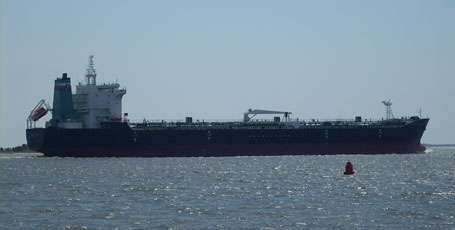
Source: Dincher
Ship routing for safe transport and efficient use of fuel is critical for worldwide commerce. Ship routers use environmental information to find routes that minimize transit time, avoid waves over a specific height, or balance travel time and fuel economy against risks to the ship.
Wave height and steepness is a major consideration, but ocean currents, wind, and hazards such as sea ice or fog are also taken into account. In some areas currents are more important than the waves. For example, oil tankers often follow the Gulf Stream on northbound runs and avoid it on the return.
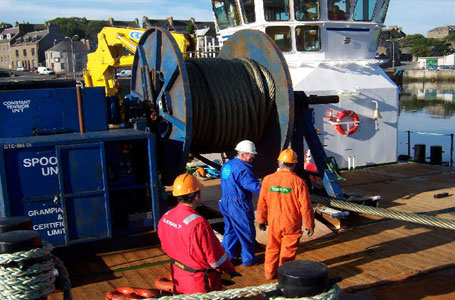
Source: Delta Marine
Marine cable laying services drag, tow, lay, bury and retrieve cables along the ocean floor. They use specialist ships often equipped with ROVs (remotely operated vehicles) with a video camera and articulated arms. They need to understand how water properties, currents, bathymetry, and other environmental variables affect a cable’s shape over time.
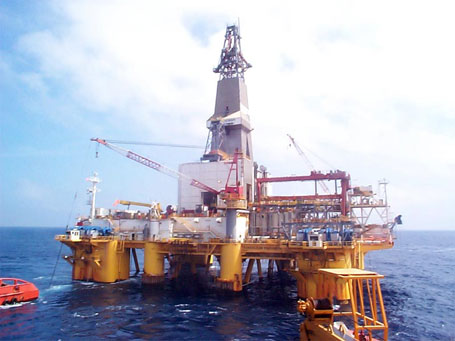
Source: NASA JPL
Offshore oil production requires information about wind speed, wave height, sea surface temperature and ocean currents in order to ensure the safety of crew and equipment and minimise environmental risks.
Knowing the currents can reduce the cost of routine operations, for example by reducing the towing time taken to bring oil platforms and supplies to the production site. More in NASA News.
Tracking marine pollution. About half of all cargo is oil or hazardous materials. The majority of accidents involving this type of cargo occur within 10km of the coast. Knowing the currents allow us to predict where chemical drums, spilt oil or other hazardous materials may turn up, and take action to clean up, or protect vulnerable areas. Offshore operators and shipping companies must have accident contingency plans that include how to minimise environmental impact. See also marine pollution.
Leisure activities. Understanding the currents are also important for leisure activities such as sailing, scuba diving, sports fishing, swimming and canoeing. Currents can be particularly strong near coasts, where most of these activities take place, and a failure to act on good local knowledge about wind, waves or currents can cost lives.
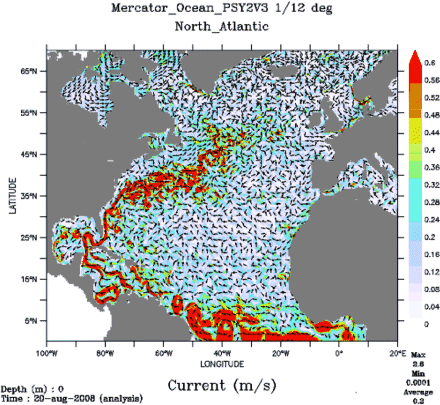
Ocean forecasts
Just as weather forecasts help people decide what to do and how to dress on a particular day, so ocean forecasts are important to people whose work or leisure involves the sea in some way.
Ocean forecasts are made in a similar way to weather forecasts, with computers running mathematical models of the atmosphere and ocean. The models use data from satellites and in situ observation, as well as the most recent weather forecasts (winds and temperatures) to produce ocean forecasts of current speed and direction, salinity and temperature near the surface and at different depths. Other models produce forecasts of wave height and direction.
Such metocean forecasts allow ferry operators, shipping lines, off-shore industries, fishermen, and many others to plan their operations.
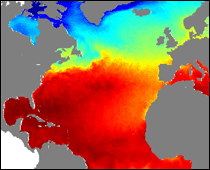
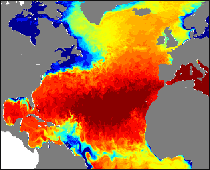
Some maritime forecasting services also provide water-quality information on suspended sediment and biology. This may be used in fishing and aquaculture, to plan dredging operations, to monitor marine pollution, to assess bathing-water quality of public beaches and the health of coastal ecosystems.
Links to more information and examples of ocean forecasting products.
